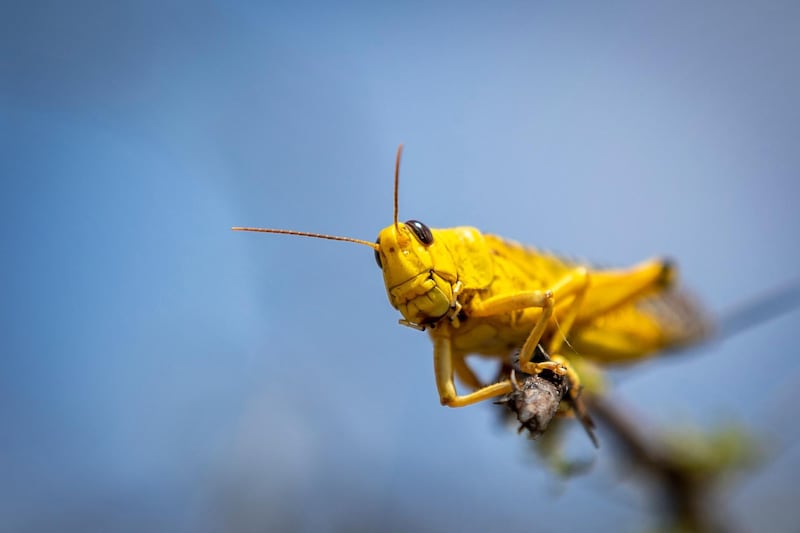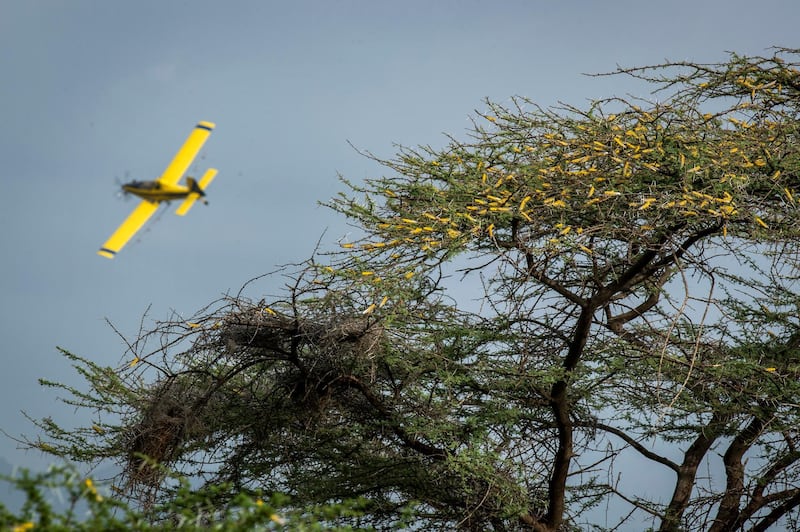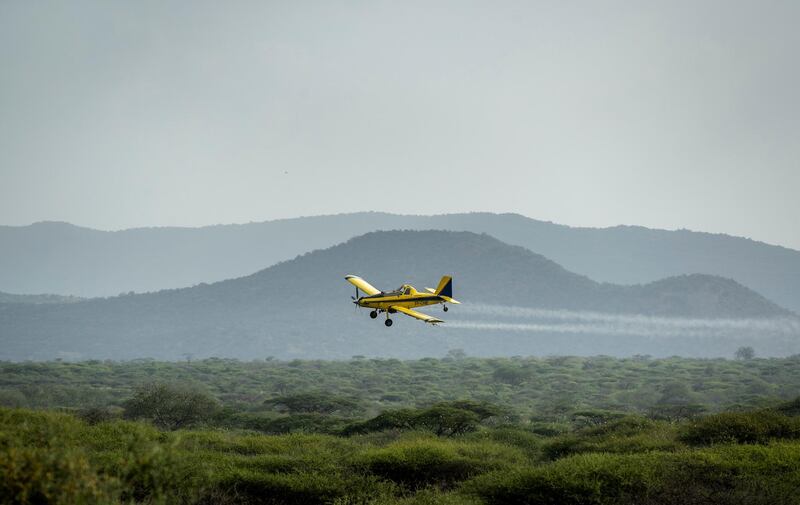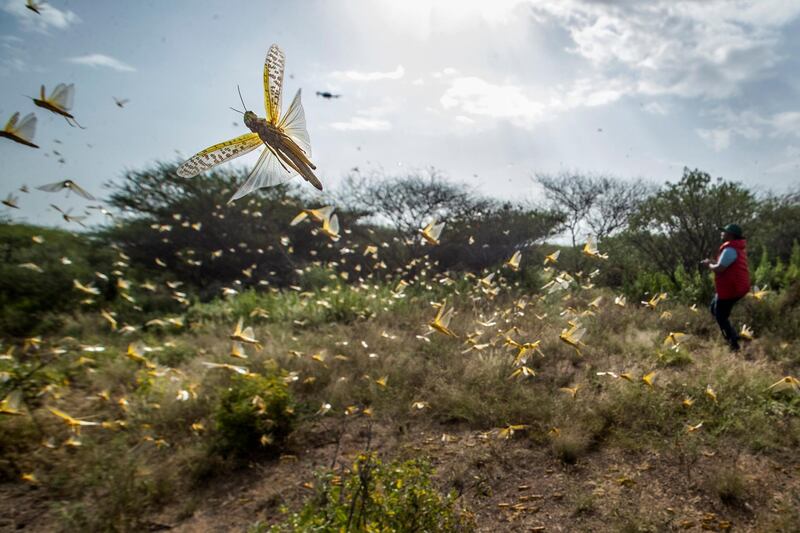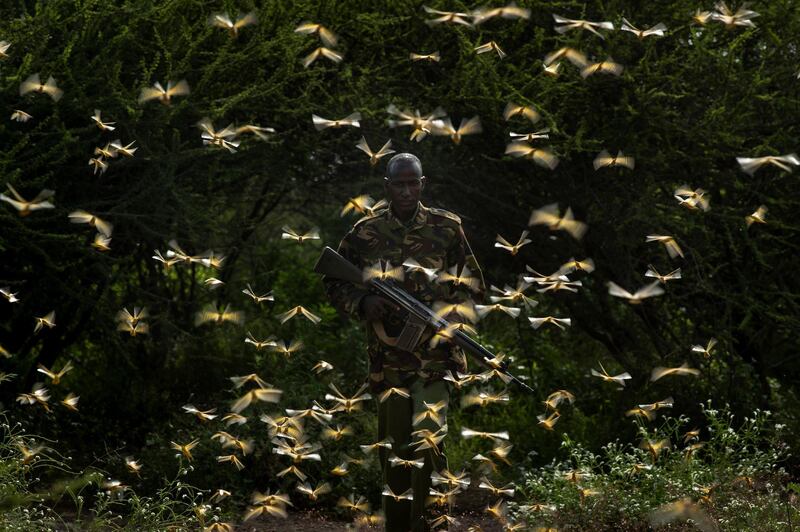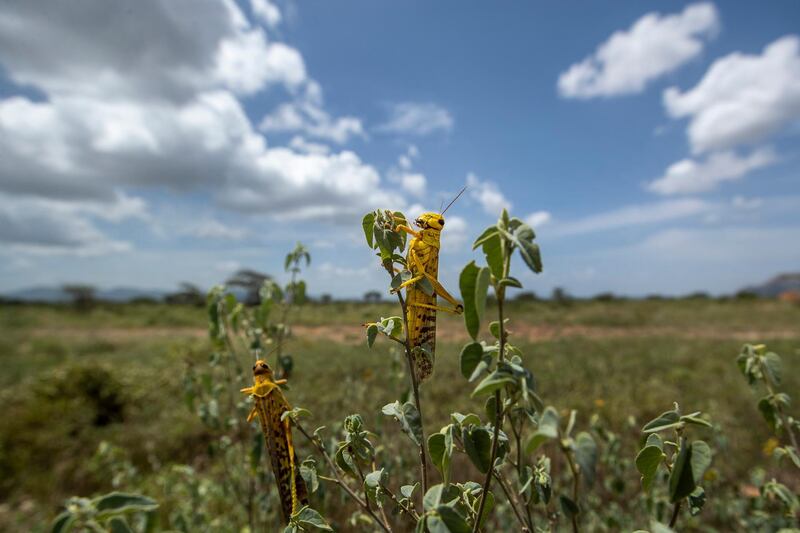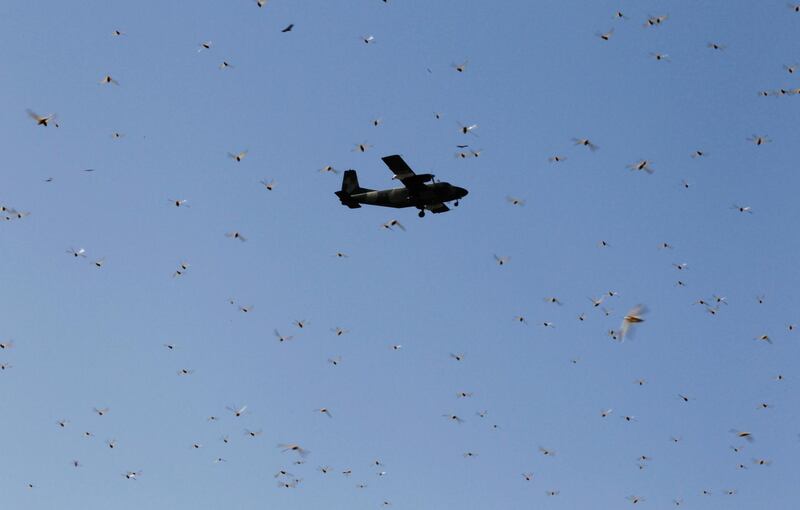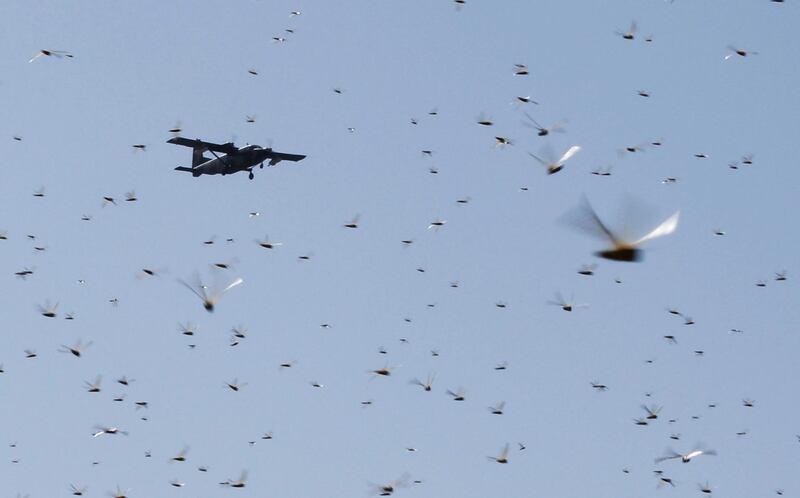When juvenile locusts first appeared on Juneid Saeed’s farm, he appealed for help to local agriculture officials, the deputy governor of Yemen’s Hadramawt province, and even contacted charities.
No one responded to his calls and the insects continued to grow.
“The locusts began as wingless nymphs creeping on the ground,” said Mr Saeed, 46, a farmer from Al Arqub village in Sah district of Hadramawt.
"So I called for help before they could grow and damage the farm."
As the locusts matured into winged adults and began destroying crops in the area, the villagers turned to traditional methods to drive them away, such as shouting and waving their hands or creating smoke by burning hay. None worked.
The locusts ruined almost half of the wheat and fodder crops by the time an agriculture ministry team from neighbouring Seiyun city arrived a month later and killed them off.
“If they had come early they could have saved the farms,” Mr Saeed said as he lamented his losses. "The team had effective spraying equipment that killed the locusts quickly."
Altogether, he said, the infestation had cost farmers in the area several million rials.
Agriculture ministry officials say Yemen’s civil war broke up the country's once effective locust response system and affected funding for monitoring and controlling the pests.
As a result, calls for help from farmers are either neglected or answered only after funding is provided.
The consequences are being felt far beyond Yemen's borders. Experts say the spread of locust swarms that are ravaging crops and vegetation in Ethiopia, Somalia and Kenya this year is because of the inability of authorities in Yemen to survey and control.
Ashor Al Zubairi, an agriculture official based in Seiyun who is responsible for battling locusts, said his office had detected swarms of desert locusts in different areas of Hadramawt recently.
But Mr Al Zubairi said it did not have the funds to send teams across the vast south-eastern province.
“We have received alerts about swarms in Quf Al Awamer and Quf Al Katheri regions," he said.
"We have sent messages to the Food and Agriculture Organisation and the government asking for financial help to combat the locusts in those areas."
In many cases, Mr Al Zubairi said, the locusts were able to breed, wreak havoc and move on to new areas before his team arrived.
He suggested an emergency fund for quick responses to outbreaks.
Before the war, a well-equipped and better-funded office based in Sanaa handled locust invasions across Yemen.
But after the Iran-backed Houthis seized control of the capital in late 2014, triggering the civil war, the officials could no longer enter government-controlled areas.
The government had to create a locust-control office in Aden, the southern port city about 650 kilometres west of Hadramawt where President Abdrabu Mansur Hadi’s government is now based.
But with little funding, it is unable to serve all of the government-controlled territory, which is 80 per cent of Yemen.
Saleh Al Harouri, deputy manager of the locust control centre in Aden, said his office was struggling to deal with pockets of locusts along the southern coastline between Bab Al Mandeb west of Aden and Abyan to the east.
“The coastal areas in Lahj, Aden and Abyan are plagued with swarms of locusts,” Mr Al Harouri said.
But his centre is waiting for funds from the FAO and government to send teams to the affected areas.
“Our budget is zero,” Mr Al Harouri said. “The office in Sanaa has 100 cars and a big team that can reach affected areas within days.
"The office here in Aden has nothing. We hire cars to visit plagued areas.”
The Aden office needs about 100 million riyals (Dh1.4m) annually to monitor and control locusts in government-controlled areas, Mr Al Harouri said.
Mr Saeed and other farmers affected by locusts say they want an emergency hotline to report outbreaks.
“We demand an emergency room that can respond to our calls and act quickly,” he said.
